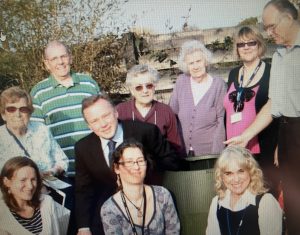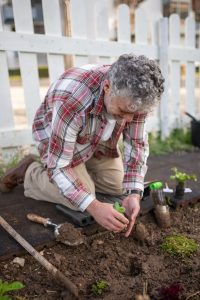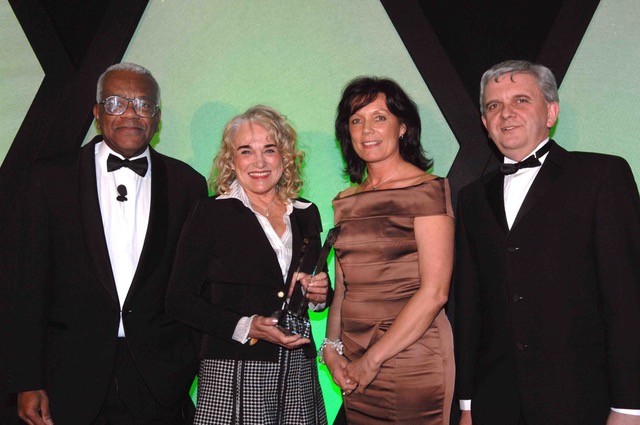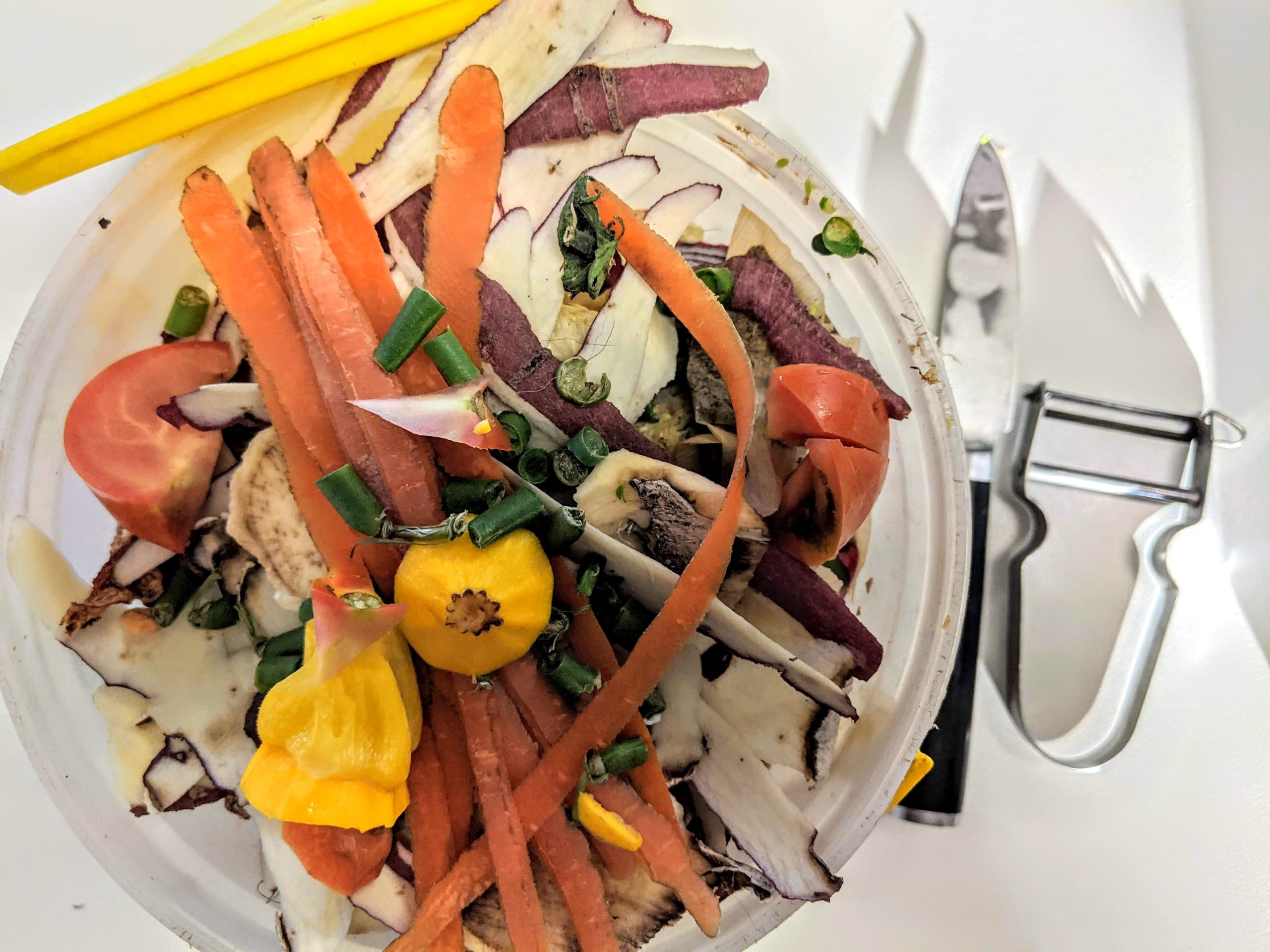When Anthea Rossouw tried to get people into composting years ago, they thought she was crazy.
‘I just got blank stares,’ she recalls. ‘At the time there weren’t studies that proved what composting could do. People just wanted to throw things in the bin. Composting was a controversial idea.’
But Anthea is passionate about the environment and has a way of bringing people with her. Using workshops to show how to use the Green Johanna, she introduced composting to the housing complex in West Sussex where she was living at the time. This was so successful that it spread to other housing developments and businesses.
Anthea had been a keen recycler for years and pursued her interest by enrolling on the West Sussex County Council Waste Prevention Advisor programme delivered by the University of Brighton. So then when she was living in Walstead Court extra-care housing facility and saw piles of bin bags in the ‘rubbish room’ destined for landfill, she knew something could be done about it.
With the support of the housing manager, Anthea showed residents and staff how to recycle food, garden and paper waste using three Green Johanna composters.
Her tutor at Brighton, Dr Ryan Woodard, had told her about Green Johannas and she thought they sounded ideal.
‘It was essential to get everyone on board though,’ she says.

Anthea, front right, with other keen composters and the Green Johanna.
The workshops worked a treat. Waste disposal routines were transformed, as was the rubbish room, now that it was clear of bin bags containing food waste.
Before long the residents were making their own compost and growing their own food and flowers. ‘We grew the most beautiful tomatoes,’ Anthea remembers.
Anthea approached the task methodically, weighing waste and tracking residual waste. Waste to landfill was reduced by 55 per cent, black bin bags were reduced from three to one per flat per week. Over a six-month period 280 kg of food waste was diverted from landfill.
The communal gardens were not the only things that blossomed. Residents and staff reported that personal well-being and community spirit also flourished. The projects helped to keep people mentally alert and physically active, through taking waste out to the Johannas, crunching up cardboard containers etc. It also gave neighbours an added reason to chat to each other, acting as a conversational ice-breaker.

Anthea was then asked to introduce similar schemes to other housing associations and businesses. She also ran trials for DEFRA (Department for the Environment, Food and Rural Affairs) and won the Gatwick Diamond Green Champion award for her environmental work.
She then decided to try the same method of community food waste recycling in a very different place – her native South Africa. Here she introduced composting to struggling townships as part of her work with the Dreamcatcher South Africa Foundation that she had set up in 1991 to alleviate poverty by creating employment. In the community, waste was historically burnt at the dumpsite having a devastating impact on the environment and public health.

Anthea, second left next to Sir Trevor McDonald, receiving the Gatwick Diamond Green Champion award.
On a trip back home, she took three Johannas as luggage instead of suitcases, wrapping her clothes around the Johannas’ circular sections. Using the same training methods as in East and West Sussex, she installed three Johannas in a communal garden managed by local women known as Kamammas (a term meaning matriarch, or community leader).
Anthea says the Kamammas quickly took to working with the Johannas.
‘They found the composters didn’t attract dogs or vermin and they were delighted when they saw the quality of compost that was produced and the food they could grow with it.’ This trial was then scaled up to introduce another 25 Johannas.
The food that is grown with the Johannas’ compost is used in the women’s work providing tourists with traditional South African cuisine.

A Kamamma introduces tourists to traditional South African cuisine.
Anthea divides her time between the UK and South Africa, and she is still in contact with the people she got composting back in the South of England. She is delighted – but not surprised – that the schemes she helped to implement are still going strong.
‘Any system must be sustainable, otherwise there’s no point. To bring about real change you have to go truly local. You need the people to make it work.
‘It takes around three months to introduce a composting project. After that people can stand on their own two feet.
‘Once you give people the skills, knowledge and confidence they become compost evangelists!’
After all these years, Anthea is still a big Johanna fan.
‘We used many other composters before settling on the Green Johanna. I underpin everything with baseline research and I knew the Green Johanna was the one.’
She still loves introducing beginners to composting.
‘They might know nothing now but you know they soon will. People become fascinated to know about all these little creatures in the composter doing their work.’
She firmly believes that if you pay attention to what’s happening in your composter you will learn how to ‘speak compost’.
‘You soon learn to tell if you need to do something to bring good conditions back. If you haven’t enough garden waste, you can use paper product waste, such as toilet rolls, cardboard, shredded paper. If the contents look dry sprinkle a little water on top.’
The Johanna may have been designed in Sweden to cope with harsh Scandinavian winters, but it has happily adjusted to the South African climate, often turning ‘psychedelic green’ in the sun.
Whatever the shade, it’s still doing a great green job for the planet, wherever on earth it happens to be.


